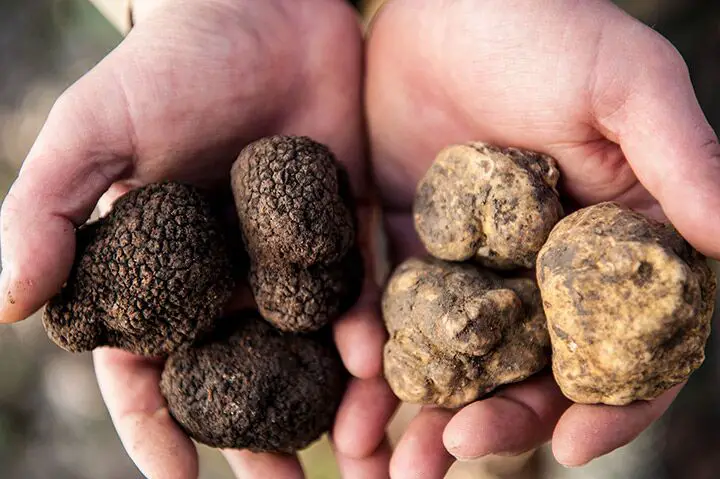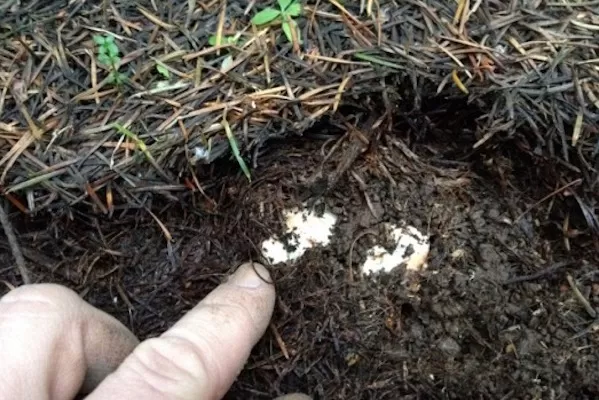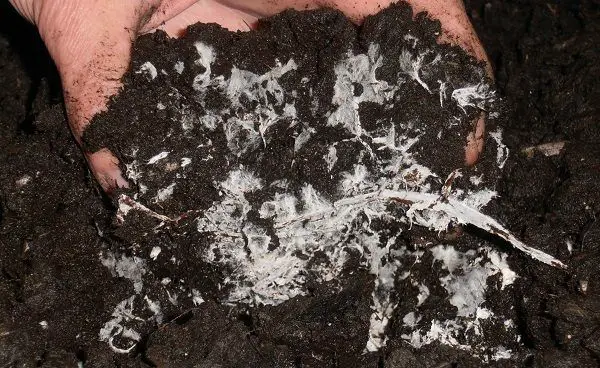Truffle is one of the most valuable and expensive mushrooms. A kilogram of mushrooms can fetch up to several thousand dollars. This excitement is caused by the unique taste and the fact that mushrooms are extremely rare in nature. Their habitats are located in Italy, France, and the UK. In the USA, there are few species of truffle are farmed. It is not surprising that many domestic mushroom growers are trying to establish the production of truffles in greenhouses or in household plots.

Today we will talk about is it possible to grow truffles, if yes, how do I grow truffles, and if no why can’t you grow truffles. Let’s figure out answers to all questions in your mind about growing truffles.
Table of Contents
Is It Possible to Grow Truffles?
There is some debate over whether or not it is possible to grow truffles. The consensus seems to be that, while it is possible, it is not easy. Truffles are a type of mushroom that grows underground, and they are very sensitive to their environment. They need a certain level of humidity and darkness in order to grow, and they also need soil that is rich in nutrients.
It can be difficult to grow truffles, but there are a few tips that can help. First, you will need to find the right soil for your truffles. The soil should be rich in organic matter and have a good pH balance. You will also need to water your truffles regularly and make sure they get plenty of sunlight. If you follow these tips, you should be able to grow your own truffles in no time!
There are two ways to grow truffles in the garden: in open ground and in a greenhouse. Of course, a number of conditions must be met.
Characteristics of truffles
Truffle is a mushroom unique in every way:
- shaped like potato tubers;
- weight varies from 20 to 200 g, although in isolated cases there are specimens weighing more than a kilogram, their value at auctions reaches up to 100 thousand euros;
- the surface is both smooth and uneven with numerous cracks, growths resembling warts;
- according to the color of the peel, mushrooms are white, gray, marble, chocolate;
- the flesh is often white, gray or yellow-brown;
- the smell, depending on the variety, can be garlic or nutty; after eating, an aftertaste resembling algae remains in the mouth;
- in cross section, a distinct marble structure can be observed;
- grows in clusters of 5-7 pieces;
- the fruiting period of the mycelium can reach 30 years;
- the shelf life of the harvested fruit is no more than 4 days.
Truffle is a mycorrhizal mushroom, that is, it grows exclusively on the roots of plants, usually at a depth of 25-30 cm. Oak or walnut acts as a partner. The habitat is warm southern areas of deciduous forests.
Given the characteristics of growth, it is extremely difficult to find truffles in the forest. Therefore, specially trained animals – dogs and pigs – are often used to search. Mushrooms contain a substance called anandamide, which is similar in action to marijuana. It is this smell that animals catch at a distance of up to 10 meters. Clouds of yellow truffle flies are an external sign of the presence of a truffle.
Mushrooms are usually picked at night when the air becomes especially clean and transparent and animals smell better.
How Do I Grow Truffles? Complete Step by Step Guide
In the last decade, mushroom pickers have been mastering the techniques and methods of growing mushrooms in greenhouses or enclosed spaces basments, and cellars. The method is based on planting inoculated seedlings in the ground. It will take at least 3 years to get the first harvest, and mushrooms will acquire a marketable appearance in about 6 years.

Inoculation – the introduction of mycelium into a nutrient medium.
A truffle weighing 20 g or more is considered commercial.
Step#1. Arrangement of Basement for growing truffles at home
At home, it is necessary to recreate the natural habitat for truffles as accurately as possible.
Basement preparation
The organization of the basement includes the following activities:
- Floor installation. Since it is a potential source of germs, it must be concrete.
- Space zoning. Equip one part of the basement for growing mushrooms, and the other for cultivating mycelium.
- Shelving installation. Choose plastic-coated metal as the material.
- Disinfection. It is carried out by 4 methods – fumigation with a sulfur checker, treatment with copper sulphate with lime, and spraying with a 4% formalin solution or chlorophos. At the end of the procedure, the cellar is ventilated.
- Organization of ventilation. To do this, a supply and exhaust air duct is installed in the room. Otherwise, the carbon dioxide released by the substrate will accumulate. To protect the basement from insects, the ventilation hole is covered with a mesh into a small hole.
- Organization of lighting and heating. Should not be intense as truffles grow in the dark. For successful wintering, it is desirable to equip the cellar with a heating device.
- Installation of thermometer and hygrometer. These devices will allow you to control the humidity and temperature conditions. The optimum temperature is from 20 to 22 ° C, and humidity from 85%.
Preparing a greenhouse is different from arranging a basement. This mainly applies to the floor surface and walls.
Greenhouse preparation
When arranging a greenhouse, special attention is paid to the material from which it will be made. For these purposes, a film, glass, or polycarbonate is used. When an external frame with shelving is installed, you need to take care of the following points:
- Lighting. In winter, mushrooms need diffused sunlight, and in summer they are protected from exposure to direct sunlight. It is detrimental to spores.
- Sealing. Before the onset of cold weather, any cracks or damage to the structure are repaired with tape or sealant. The vents are glued with a rubber seal.
- Ventilation. Windows for ventilation are located on the roof or above the door. Also, it will not be superfluous to install a pipe for flow-exhaust ventilation.
- Water supply. Irrigation of truffles requires a fine water spray system. It is advisable to use rain or meltwater. It is suitable for mushrooms in terms of hardness and acidity.
- Heating. Install a low-power electric boiler for large rooms or radiators for small ones. The latter are fixed at a slight elevation from the floor surface.
In addition, humidity and temperature controllers are needed. To protect the room from exposure to sunlight, the roof is whitewashed with lime or hung with curtains
In summer, the greenhouse must be protected from the sun.
Step#2 Preparing the soil for planting mycorrhiza for truffles
The main condition for the formation of truffles is a soil pH of at least 7 units. In addition, it should be enriched with calcium. Otherwise, the culture will not form a fruiting body.
The nutrient medium for truffles includes the following components:
- a layer of soil taken from a deciduous forest along with fallen leaves;
- fresh wood of a partner tree processed into sawdust;
- sand;
- the soil in which the seedling of the tree grew;
- mineral fertilizer.
The sand in this mixture acts as a baking powder. After preparing the soil, it must be disinfected in an oven at a temperature of 120 ° C, cooled and sieved. Do not put top dressing and sawdust in the oven. These components are added immediately before planting material is introduced into the soil.
It is advisable to use a high performance npk fertilizer. It contains the main nutrients for plants potassium, nitrogen and phosphorus.
Step#3. Selection of planting substrate for truffles growth
Properly prepared soil and high-quality mycorrhiza give impressive results.
Buying of mycorrhiza (truffle mycelium)
It is preferable to use store-bought planting material infected with truffle mycelium. This will bring the first harvest 1 year closer and reduce labor costs. Together with the shoot of the tree, the soil in which the inoculation was carried out is purchased. It speeds up the process of adaptation to a new place. You can buy mycorrhizal substrate in online stores.
Mycorrhiza is made from mycelium and a partner tree

Self obtaining truffle Mycorrhiza
Self-obtaining mycorrhiza is quite energy-intensive. This requires 2 components – mycelium and tree seedlings.
Table 2. Required materials for the manufacture of mycorrhiza
| Material | Characteristic |
|---|---|
| Plant | In order for mycorrhiza to form better, not young plants are taken, but seedlings. The cost of 1 seedling is approximately 600 rubles. |
| Mycelium | To infect one seedling, you need 150 g of fresh or 100 g of dry mycelium. The minimum cost of one package, with a volume of 60 g – from 300 rubles. Do not mine the material yourself. Without its partner tree, it will not be able to form spores and develop into a fruiting body. The presence of mold or putrid smell is unacceptable. Should be stored in the refrigerator. |
The process of mycorrhiza formation lasts about 1 year.
Truffles mycelium is sold mainly in 2 types: live, fresh and dried. The shelf life of the first is 6 months, the second is unlimited. The basis is the grain with mother crops. Cereal grains are often used as a base for growing the vegetative body of fungi. Preference is given to French black and Chinese truffles. White is almost impossible to grow on an artificial plantation.
The infection lasts approximately 1 year. For this, seedlings are treated with a mixture of peat and mycelium. Inoculated seedlings for 1 year are placed in a closed room, the entrance to which is possible only after thorough disinfection. When the seedlings reach a length of 20 cm, they are ready to be transplanted to a permanent place.
Due to the fact that the mycelium takes root exclusively on damaged roots, they must be incised manually.
Plants are infected with mycelium in spring
Step#4. Planting Truffles mycorrhiza in the planting substrate or medium
After the mycelium has taken root in the root system of the plant, it is necessary to place the mycorrhiza in the soil.
General transplant recommendations:
- The best time is after the last spring frost. Approximately in the middle of May, when the air warms up to +23°С.
- Do not fertilize the soil. The last top dressing of the soil is 6 months before planting.
- The distance between the holes is 1 m, and the depth is from 25 cm.
- Before and after planting, water is poured into the pits.
- Sprinkle the holes with sawdust or hay. Layer thickness – up to 2 cm.
- Quarantine for 1 month.
Place the roots in the ground with extreme care.
Under natural conditions, the mycelium germinates after being in the acidic environment of the stomachs of animals. Therefore, it is important to maintain soil acidity within 7.5 units. This value should be measured several times a year and the pH adjusted if necessary.
Step#5 Seedling care
The main care measures are moistening the soil as it dries and weeding. Several times a year, the culture is fed with fertilizers with a high content of iron, copper, calcium, boron, and zinc. Herbicides with rapidly decomposing ammonium glufosinate are used as antiparasitic drugs and weed control agents. Glyphosate is not suitable because it negatively affects the mycelium.
Step#6 Harvest
For 3-4 years, fruiting, characteristic of truffles, begins, the indicators of which increase every year. The collection time is early September. Mushrooms should not be dug up prematurely. A ripe specimen has a bright, rich aroma and cap color, characteristic of the planted variety. Dig up the fruiting bodies with small spatulas.
Under one tree grows from 7 to 10 truffles mushrooms per season.
The truffle growing business requires a lot of labor and time. However, with proper care of the plantation, it pays off within 3-4 years.
Truffles mushroom growing season
To understand the technology of growing truffles, you need to have an idea about the features of the growth of the fungus. This will help ensure quality care at every stage of its development. Beginning mushroom pickers should learn 2 key concepts related to their growth.
Mycelium is the vegetative body of a fungus. The appearance of the mycelium resembles cotton wool or fluff. He participates in sporulation and is responsible for attachment to the roots. It mainly consists of long thin hyphae threads, through which water and nutrients are delivered to the body of the fungus.
Mycorrhiza (translated from Greek as “mushroom root”) is a symbiosis of mycelium with tree roots, during which mutual nourishment occurs. Plants provide the fungus with carbohydrates, while truffles provide moisture.
Types of truffles with growing season
The truffle family includes many edible species.
Most popular varieties truffles with growing season
| Type | Country or region of growth | collection time |
|---|---|---|
| White Piedmontese | Piedmont and Tuscany in Italy. | From October to December. |
| Black Periguere | Perigueux in France. | December to March. |
| Skorcone | In the Alps. | From August to September. |
| Burgundy Black Autumn | France, Italy, and North Africa. | From October to December. |
| Black musky | Europe except for the eastern region. | November to March. |
| Black Russian or Summer | Transcaucasia, Crimea, and the European part of Russia. | June to October. |
why can’t you grow truffles?
There are many reasons why you can’t grow truffles. The first reason is that truffles grow in very specific conditions, which are difficult to replicate. They need a specific type of soil, which is found in only a few places in the world. They also need a cool climate, with plenty of rain and fog. Truffles grow best at high elevations, where the air is cooler and more humid.
Another reason why you can’t grow truffles is that they are very sensitive to changes in temperature and humidity. If the weather is too hot or too dry, they will not grow properly. Truffles also require a lot of nutrients, which are not always available in soil.
Finally, truffles are very difficult to harvest. They grow underground, so they are difficult to find without special equipment.